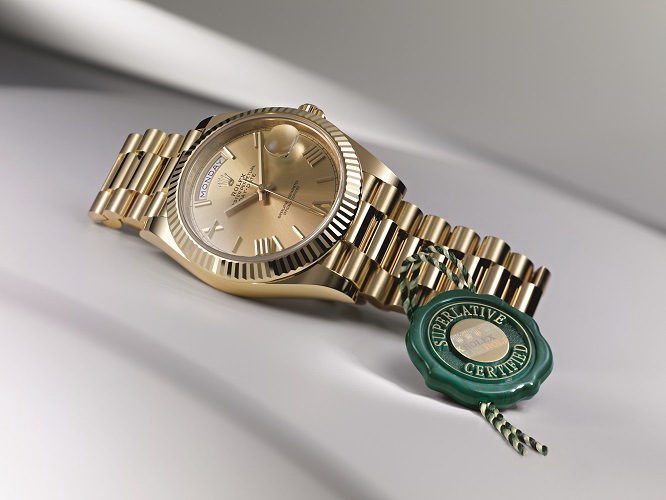Collector’s Guides • 07 Aug 2017
A Guide To Technical Standards In Watchmaking
Watchmaking has constantly sought to improve chronometry while working within the prevailing limits of material science and micromechanics. Following the Quartz Crisis, the mechanical timepiece’s re-emergence as a luxury object also saw an expanded focus on other qualities such as movement decoration. Several standards exist today to quantify and evaluate these qualities, which we will discuss later. For some perspective, let’s first briefly look at how chronometers were certified in the past.
Observatory trials of yore
Accurate timekeeping was paramount to navigation in the past and their precision was assessed by observatories, with several notable ones scattered throughout Europe, including the Astronomical and Chronometric Observatory of Neuchatel established in 1858, now simply called the Neuchâtel Observatory. The Neuchâtel Observatory’s original name reflected its former functions, which included the assessment of timepieces’ accuracies. This was a common role of observatories, since they also served as (local) time standards before the advent of broadcast time signals.

Neuchâtel Observatory today.
Observatory trials involved sending movements to observatories, where their rates were measured in various positions and at different temperatures over what was typically 30 to 50 days. The ones that successfully ran the gauntlet were awarded the Bulletin de Marche to identify them as observatory chronometers. Note, however, that these trials worked quite differently from modern watch tests – criteria were more stringent, even when compared to present day standards, and varied between the observatories. On the other hand, manufactures entered far fewer movements for observatory trials compared to the ones submitted for various tests today. The calibres that were sent for such competitions were also overwhelmingly designed and built to excel at these tests, and carefully assembled and regulated for the best possible performance, almost like one-off projects. Think of it as an F1 car – car marques will race with their best creations at F1, but never produce these vehicles commercially, although technical advancements developed in them do trickle down to production vehicles.

Observatory trials in turn led to observatory competitions, where movements were submitted for testing, then ranked against other entries explicitly; winning the first prize in such competitions was obviously a great achievement for a brand, and conferred the appropriate bragging rights. Alas, such trials took a forty year hiatus from 1968, before resuming tentatively in 2009 in a revamped biennial format, and stopping again in 2017. The history of observatory trials is a story unto itself, and better elaborated on in a separate article.
The discontinuation of observatory trials in the late 1960s didn’t lead to a dearth of standards though; new ones such as COSC took their place, and newer ones such as the METAS-certified Master Chronometer have joined their ranks.
COSC
Officially Contrôle Officiel Suisse des Chronomètres, the independent non-profit commonly known as COSC administers the quintessential chronometer certification. When you purchase a “certified chronometer” – mainly from Rolex, Omega, Tissot, and Breitling, which make up the bulk of certified watches – you’re buying a timepiece fitted with a movement that has been certified by COSC.

Breitling’s Navitimer 46, fitted with a COSC-certified Breitling 01 movement.
A certified chronometer was tested by COSC in accordance with the ISO 3159 standard that defines a chronometer. Over a 15-day period, the uncased movement is placed in five different positions and exposed to three different temperatures: – 8, 23 and 38 degrees Celsius. To be certified as a chronometer, the movement must keep time to within -4 and +6 seconds a day on average and pass a few other related criteria.
Some manufacturers provide a physical COSC certificate with the watch the specific movement is cased in, but this is not always the case. All tested movements, however, have their serial numbers stored in the archives of COSC.
Geneva Seal
The Poinçon de Genève, or Geneva Seal, was originally established in 1886 by the canton of Geneva. Today it is run by the Foundation of the Geneva Laboratory of Horology and Micro-engineering, or Timelab for short – an independent body administered by the cantonal government. Inspection work aside, Timelab has also updated the seal’s qualifying criteria to arguably maintain the its prestige in 1994 and 2011.

Like every Roger Dubuis timepiece, the Excalibur Skeleton Automatic bears the Geneva Seal.
The Geneva Seal was primarily meant to help the city’s watch manufactures distinguish themselves from others: only timepieces crafted in the canton of Geneva that meet its criteria can bear the Poinçon de Genève. Up until 2011, these criteria have largely centred on movement decoration and finishing, while leaving chronometry and the aesthetics of non-movement parts (such as the case, dial, etc.) unmentioned. In 2011, however, the Geneva Seal’s criteria was updated to encompass the entire watch, which meant testing not only the accuracy of a movement, but also its power reserve and water resistance, along with case and movement aesthetics. Watches that bear the Geneva Seal are now tested over seven days with a maximum deviation of one minute for the week, or +/-8.5 seconds per day.
Timelab doesn’t actually inspect watches individually before awarding them with the Geneva Seal. When a Geneva-based manufacture wants to apply for the Seal on a particular model, it creates a reference piece that is sent to Timelab for certification and future reference. Timelab then has its own personnel to monitor and audit the manufacturing and quality control processes for subsequent runs of the watch, to ensure that they keep to the standards set by the reference. Chronometric testing, too, is done by the manufacture itself, albeit with tamper-proof equipment.
Omega’s METAS-Certified Master Chronometer
In late 2014 Omega announced it would start all-new, significantly more stringent in-house quality control test that would be certified by METAS, the Swiss Federal Institute of Metrology. Watches that passed the tests would be Master Chronometers.
Movements in Master Chronometer watches first have to pass COSC chronometer tests. Then the COSC-certified, movements are then subjected to several tests performed in-house by Omega, first as uncased movements and then as complete watches, including being subjected to a magnetic field of 15,000 Gauss.

The Globemaster was Omega’s first watch to be certified by METAS as a Master Chronometer.
The METAS-certified tests also cover performance at different temperatures, when magnetized and demagnetized, at different levels of remaining power reserve. And it also covers basic parameters like water resistance, being very comprehensive. Master Chronometers are certified to be accurate within 0 to +5 seconds per day.
The METAS testing is open to all and any watch brand, but only counts Omega as a participant to date.
The Patek Philippe Seal
Patek Philippe is among the most prestigious luxury watch brands – and it created quite a stir with its announcement abandoning the Geneva Seal in 2009, ending more than a century’s worth of history.
The replacement was its own certification process, the Patek Philippe Seal. As the name indicates, the Patek Philippe Seal is exclusive to and administered by the Geneva brand. It is neither open to other manufacturers, nor certified by an independent third party.

The Patek Philippe Seal, on the bridge of a calibre 324 S Q in the Ref. 5320G Perpetual Calendar.
The Patek Philippe Seal certifies the timekeeping performance of both uncased and cased movements as well as the quality of finishing on internal and external parts. As such, Patek Philippe watches produced after 2009 are tested to be accurate within -3 to +2 seconds per day for movements 20mm or larger (for men’s watches), and -5 to +3 seconds for movements smaller than 20mm (in ladies’ watches).
Rolex Superlative Chronometer
In March 2015 Rolex introduced its Superlative Chronometer standard, based on tests that Rolex now applies to its entire production of watches. Rolex still sends all of its movements to COSC for independent chronometer certification, but when it receives the movements back from COSC, Rolex subjects the finished watch to its owns tests, which are said to be entirely automated.
Rolex does not reveal the specifics, but we know that accuracy (including real life wear simulated by robotic arms), power reserve, winding efficiency and water resistance are tested.

The Oyster Perpetual Explorer II, with a Superlative Chronometer calibre 3187 movement.
And we do know the bottom line: Rolex Superlative Chronometers run within -2 and +2 seconds per day – a truly remarkably performance.
Qualité Fleurier
Established in 2001 and launched in 2004, Fondation Qualité Fleurier (FQF) is an independent watch certification body set up by Chopard, Bovet, Parmigiani, and movement manufacturer Vaucher (a sister company of Parmigiani) – all four share the same home town, Fleurier, explaining the name of the body.
FQF requires a watch to be entirely manufactured in Switzerland and have movement finishing meeting certain requirements. Also, it requires a set proportion of watches (20 in a production run of 201 pieces) pass several hurdles. First, the proprietary Chronofiable test, which was designed to simulate aging, and then shock and magnetic resistance, followed by meeting COSC standards, and lastly the Fleuritest, a 24-hour wear simulation that demands timekeeping between 0 to +5 seconds.

The Qualité Fleurier engraving on the bridge of Chopard’s L.U.C XPS Twist.
As you can see, a wide variety of tests and certifications have been established over the last two hundred or so years – and surprisingly a large number of them have taken shape in the recent past, proof that luxury watch manufacturers are still striving to set themselves apart from the competition.











